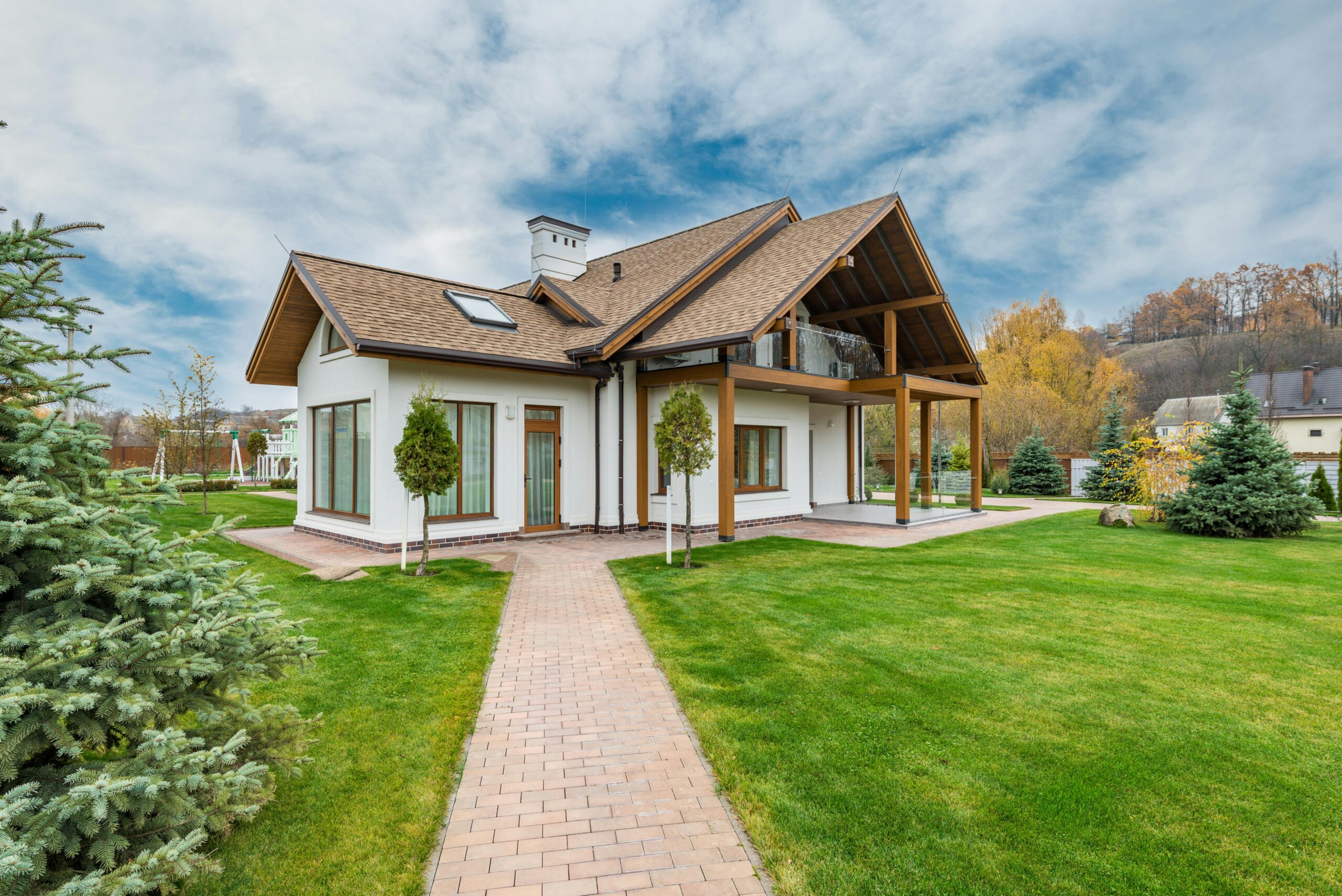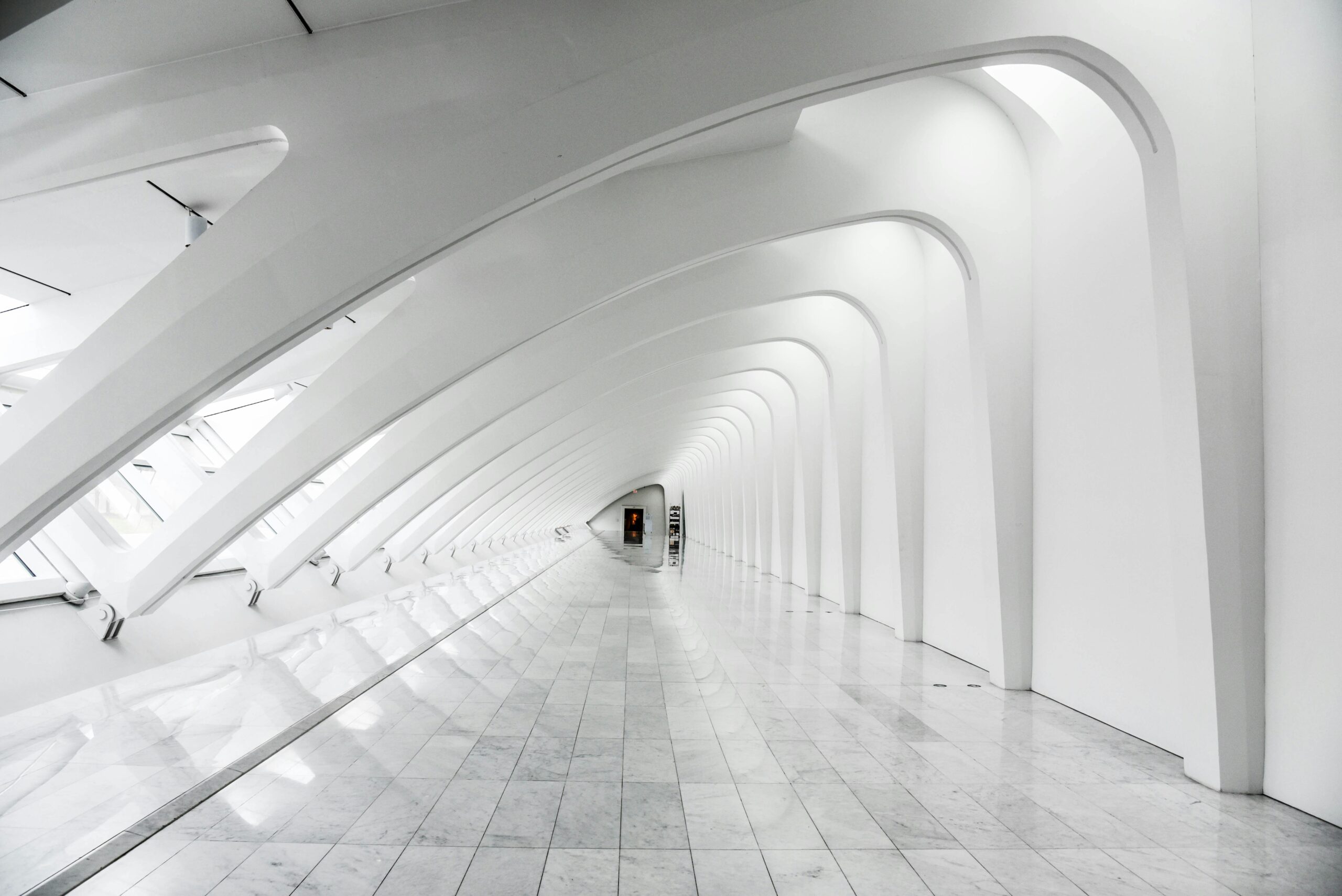Our company is excited to see the revolution in interior design techniques: first, it was simple sketches, AutoCAD drawings, 3D renderings (a bit later ultrarealistic 3D renderings), virtual reality applications, and at last: Augmented reality which took interior design to a completely new level, Augmented Reality Apps for Interior Visualization makes life for architects and designers much easier. As an interior designer, real estate developer, or architect, you must be curious about the techniques that are possible nowadays – namely, augmented reality. Not to worry, this article will give you all the information you need to know about this.
You will not only learn about what augmented reality is but some great augmented reality apps as well. Their advantages, practical usage, and challenges will also follow, so read till the end.
What is Augmented Reality
Have you ever watched science fiction movies where characters display virtual information from their tablets or computer screens onto their physical space and thought that it was cool? Augmented reality in interior design is essentially the same thing.
Augmented reality pertains to the exhibition of an interior design from your laptop, tablet, or smartphone onto a physical environment around you. This allows you to perceive in real time how all the furniture, spatial arrangements, colors, and materials would look like in the to-be-constructed place.
As a designer, augmented reality is akin to an evolutionary process that has changed the way you would experiment with your floor plans and present them to a client. After all, now you can play to your heart’s content with your designs, polishing the digital blueprint until all its aspects align with your client’s requirements and potential issues are resolved.
7 Popular Augmented Reality Apps
Of course, you cannot observe augmented reality without the assistance of augmented reality apps. These apps survey your environment through your mobile or tablet camera and then present a 3D image of your design onto that space.
Let us take a look at some of the industry’s most popular augmented reality apps.
1. IKEA Place
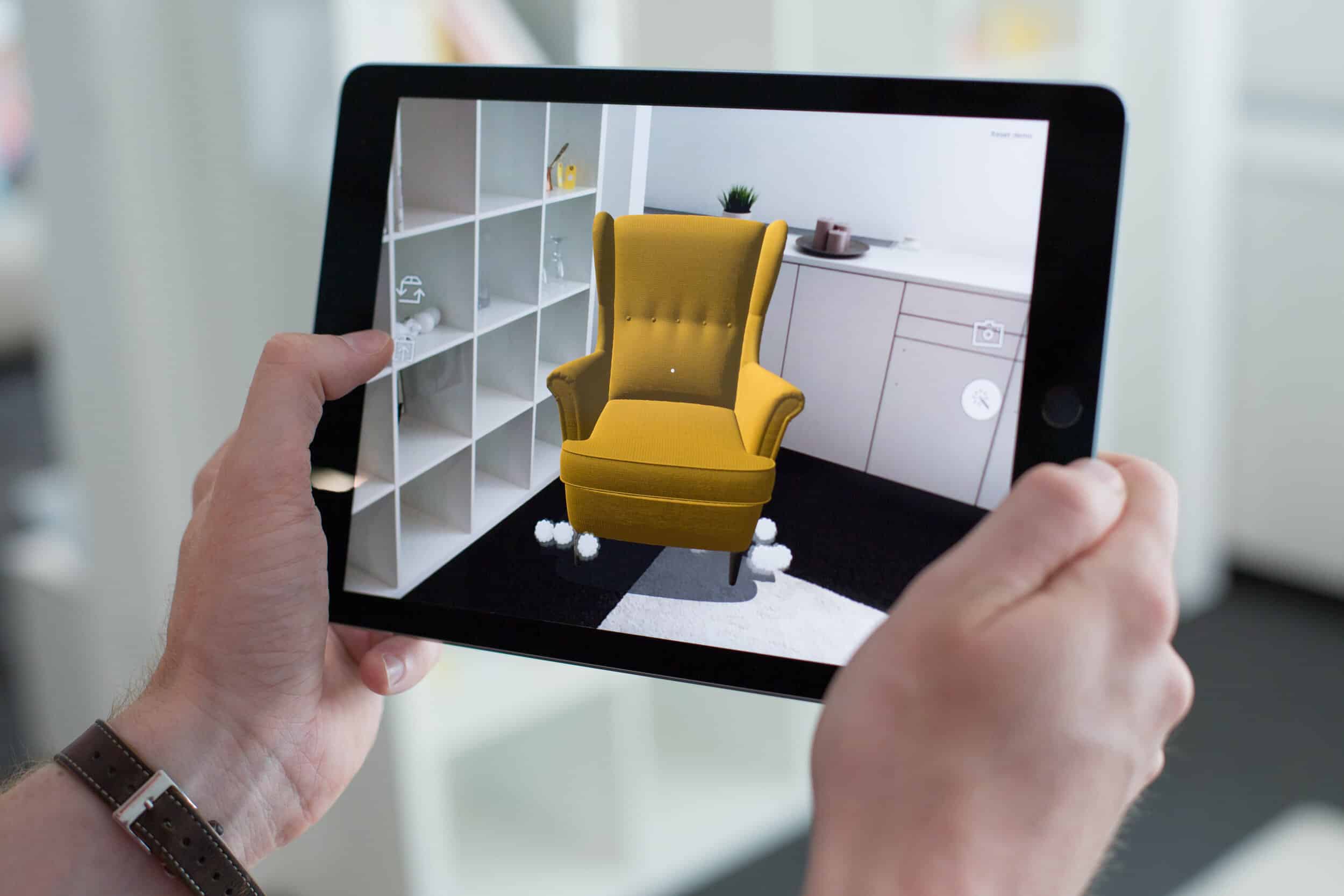
Struggling with how to place which furniture piece where so that it would fit perfectly and would not feel out of place. Or, are you trying to visualize how the walls would align in a space where construction would soon take place or a room you wish to renovate?
If so, the IKEA Place is exactly what you are looking for. Its key focus is furniture placement and visualization, thus containing a plethora of furniture choices with the right sizes. Since this augmented reality app is created and owned by IKEA, the furniture and visual choices are mostly from the IKEA catalog.
With this app, you can easily envision the placement of IKEA furniture products in your home space and figure out the right location for them. Since this app is highly accurate in its scaling and shadowing, you don’t need to worry about getting the wrong size.
2. Houzz
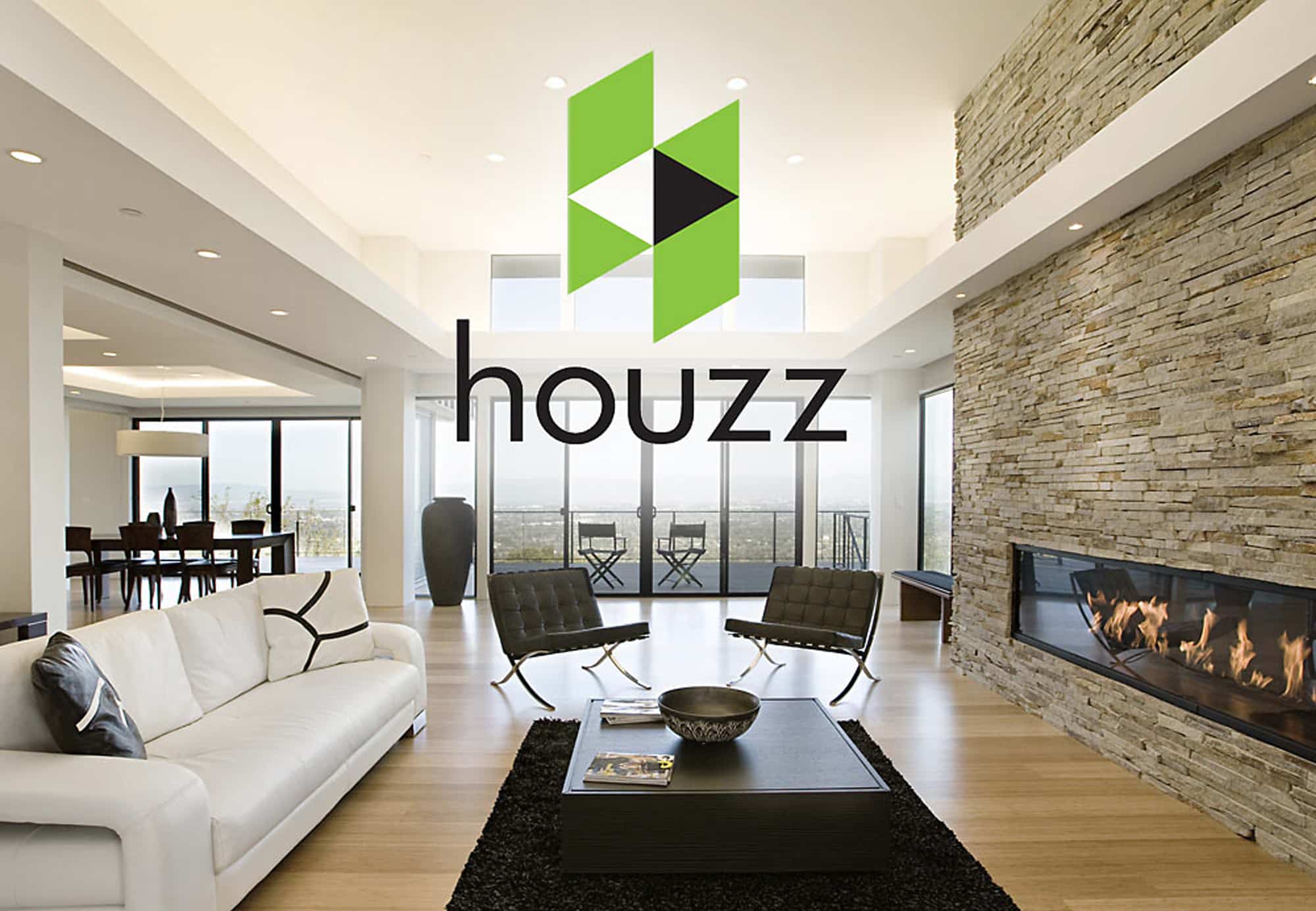
Gone are the days when you would stand in a shop and ponder which decorative piece of furniture would fit in your room or house. Augmented reality apps have ensured that you can now visualize your indoor furniture from the comforts of your home.
The Houzz augmented reality app is perfect when you are remodeling or designing your home. It has an extensive library from which you can select an array of products to see what would look best in which room.
It has a “View in My Room” which you will love. You can shop various products from different brands or simply use it to gain inspiration for ideas. Either way, you won’t regret having Houzz.
3. Magicplan

Troubled by the conventional and tiring methods of measurement that require the use of tape. The process takes a long time and can even have errors. However, no need to fret anymore because Magicplan is here!
Like magic, Magicplan will measure the space you scan with it; its device sensors promise you exact accuracy in terms of size and measurements. With this, you will never worry about any potential misalignment between walls or furniture not fitting due to inaccurate measurement.
Since its focus is on space scanning and measurement, it offers little in other aspects, such as furniture options and advanced visualization.
4. DecorMatters

DecorMatters is another amazing augmented reality app that aids you in your quest to decorate your house. As its name suggests, it places special emphasis on the decorative aspect of a room and offers various furniture and decor options as a result.
However, this is not all that there is to this app. DecorMatters also features other cool features, such as colors and floor planning. With this, you can check out which color would suit which wall and what colored furniture would look beautiful in which space.
But wait, there’s more! DecorMatters does not just show what looks beautiful in your room; it allows you to make online purchases to buy your favorite decor right away. Convenient, isn’t it?
5. Dulux Visualiser

Dulux: rings a bell, doesn’t it? Well, you are exactly right. Dulux Visualiser is an augmented reality app from the paint company Dulux. Just like its owner, Dulux Visualiser focuses on colors in a house, specifically the paints.
Wall paints are an essential feature in any household that gives the house its tone and feel. A paint color matters significantly in what impression you wish to create, be it in a house, shopping mall, or restaurant. Even different rooms carry different feel depending on the pain on their walls. Bedrooms, living rooms, drawing rooms, and washrooms – all have different wall paint colors to give a different impression.
What’s even better is that when the Dulux Visualiser scans your room wall and presents the visual of paint color, it does not cover any painting or decor item that is on the wall. This allows you to properly appreciate if your current decor would suit that wall paint or not. Wonderful, isn’t it?
6. Wayfair
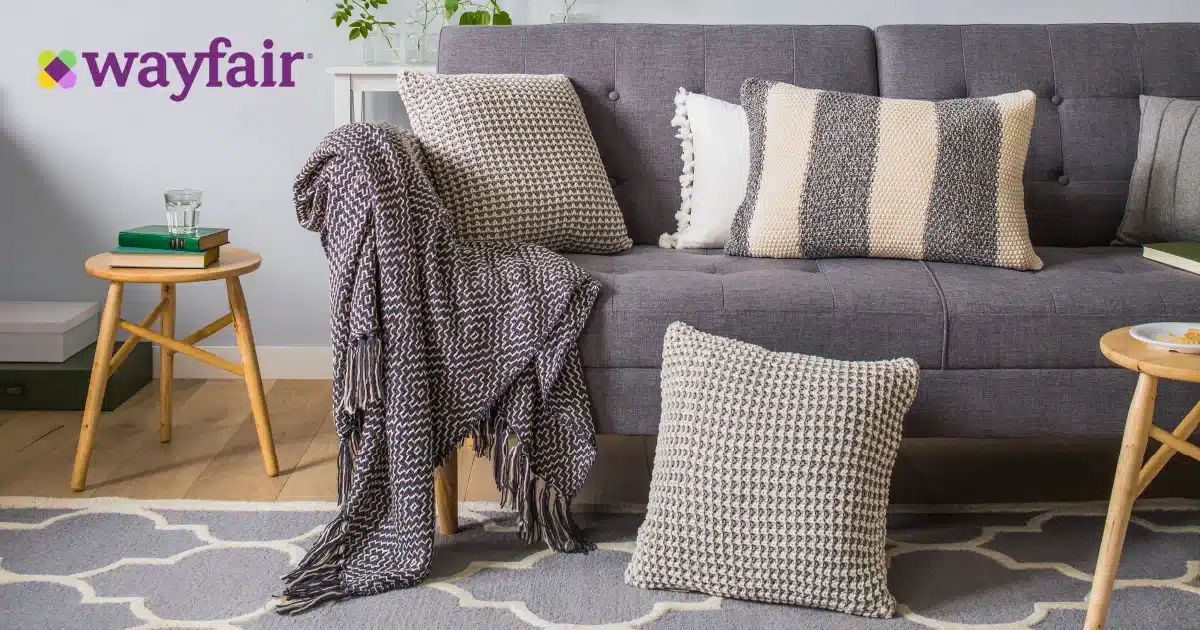
An app created by their company, the WayFiar augmented reality app allows you to visualize which furniture would look best and be suitable for your space. This app has an entire catalog of Wayfair products, which you will love.
Not only that, this augmented reality experience has been merged with their shopping experience. Therefore, you can now shop for your favorite furniture or decor piece without any worries. That furniture will not only fit perfectly in your space but there will be harmony with its surroundings as well.
7. PLNAR
While the above-mentioned apps can be used by laymen as well simply to purchase decor items for the home, the PLNAR is an augmented reality app specially designed for professionals.
Using it to measure the space will be the best thing you can do. You can either note down all the dimensions that the PLNAR shows you. Or you can make things easier for yourself by creating its report and printing it. This will give the complete measurement of the floor plan as devised by this augmented reality app.
Benefits of AR Apps for Interior Visualization
Having read about augmented reality apps, you must have realized how convenient and cool these programs are. Likewise, they offer you some notable advantages that you won’t be disappointed with, especially as a professional interior designer.
With these apps promising you enhanced communication with your client, improved marketing, and increased accessibility, what more could you ask for?
1. Enhanced Client Communication
When there were only hand-drawn sketches as a means of presenting your ideas, you could never know if you and your client’s thoughts aligned. After all, 2D pictures are limited in what they portray and lack depth.
With a virtual image of your design before your eyes, your client can immediately point out if there are any areas he/she does not agree with or if there is something not feasible for them. Further, both of you can observe which furniture, color, and materials go where and whether they fit there or not.
Another important point is that you can nib any potential issues in the bud. During construction, problems tend to arise due to a lack of spatial understanding in 2D sketches. Again, with a 3D drawing before your eyes, you can point out these issues so that they do not disrupt your work efficiency during construction.
This, in turn, saves you both time and money that would otherwise have been spent on dealing with costly repairs.
2. Improved Project Presentation
Imagine being in a room where only boring presentations are taking place, and all that the presenters are bringing about is an imagined idea with no way to tell how it would look in real life. Well, you can shine in such a dull space with the help of augmented reality apps. After all, augmented reality apps are not just there to project your creative intellect onto a physical space; they do a lot more.
When you can concretely display your floor plan in the room you are in, it will allow your client to interact with it and actually envision how that space will look after being constructed. Be it a bedroom, a kitchen, a living room, or a lawn, having its spatial arrangement, furniture, and materials, among other elements, laid out before them will undoubtedly make an impression.
Such an innovative presentation will not only seal the deal for you but will also serve as a marketing strategy, building your credibility.
3. Increased Accessibility of Design
Interior designing requires a great deal of in-depth knowledge of not just its profession but knowledge of materials, colors, and budget as well. In this regard, it is difficult to imagine that a layman could come up with a plausible design for any space or for renovation.
Augmented reality apps have resolved this issue as well. These apps can display a design on your space, giving you suggestions about what spatial arrangement, furniture, and other elements would fit. With this, clients can come up with their unique ideas and propose them to a designer.
It will enable clients to create a space according to their requirements and personality.
Practical Applications of AR Apps in Interior Design
Augmented reality apps are not merely there to serve as a marketing tool for you, interior designers. You can use these for much greater purposes as well.
Practically speaking, augmented reality apps will aid you a great deal when creating any residential design, commercial design, and even interior design education and training. How cool is that!
1. Residential Design
Struggling with creating a homely design that will fit well with the space? Or, perhaps pondering a renovation style that will make the house anew in its allotted space? Fear not, for augmented reality apps are there for the rescue.
Use the augmented reality app to scan the area where you will be constructing or renovating, and let the app offer you its services. Augmented reality apps will offer you a myriad of options in terms of materials, textures, colors, and even furniture type and their placement.
With this, you can visualize exactly what course of action would be suitable. Which room will go where, which color would be perfect on which wall, which texture would suit which door – all questions would be answered.
In terms of renovation too, you can use the augmented reality app to figure out design elements. For instance, breaking which wall would make the room spacious without making the other room cramped, or which furniture setting would fit better in the room – what can you not check!
2. Commercial Design
Planning to build commercial buildings in populated areas? After all, retail stores, restaurants, hotels, shopping malls, etc., have the most output when located in populated areas. However, one drawback of such a location is the management of traffic flow after the commercial building is up and running.
Now, you no longer have to worry about these things, as augmented reality apps allow you to foresee these issues during the design phase. Subsequently, you can take appropriate measures to ensure that these problems do not arise later.
You can also check out what interior style, furniture, and materials would be suitable to maximize customer engagement so that the business thrives without any worries.
3. Interior Design Education and Training
Ever felt bored in interior design classes that only expound on theoretical concepts? You must have. After all, who enjoys learning about harmonious textures, materials, and colors from textbooks?
Lo and behold! Augmented reality apps will make that boredom go away. That’s right. Besides their experimental and practical purposes, augmented reality apps can turn a dreaded theory lecture into a jolly and interactive session.
Students can now visualize the color theories they have been learning. For instance, how golden wallpaper gives the room a royal feel or how the addition of green color in the form of decorations or sofas can make the room lively. They can see it all in real life.
Challenges and Limitations of AR Apps
As great as augmented reality apps are and as beneficial as their advantages are, there are still some challenges and limitations associated with them as well. These range from technological limitations to user learning curve to the cost and availability of their advanced features.
1. Technological Limitations
Augmented reality apps are markedly known for their simulation of real-life lighting and shadows. Yet, just like even the most capable artist cannot exactly replicate real-life colors, these digital apps, too, can not completely imitate nature’s lighting and shadows.
While augmented reality apps promise realism, they, too, fail in some aspects. Similarly, spatial arrangement is another aspect where AR apps are not the most accurate. They could misalign some walls or textures, leading to a confused virtual image.
Another problematic technical limitation is that the usage of advanced features slows down the rendering process. This, in turn, disrupts work efficiency.
2. User Learning Curve
Interior designers with expert knowledge of interior designing programs and emerging software would be able to run augmented reality apps without much issue. However, those who are not well-versed in this field will end up facing more difficulties.
Augmented reality apps – as a tool for advanced interior blueprints – often involve complex and advanced knowledge of 3D modeling or design principles. This becomes especially demanding for individuals lacking design or technical expertise. Inevitably, a steep learning curve results.
This, in turn, leaves individuals unable to utilize the augmented reality apps to their full potential, as they get stuck trying to understand the complex interfaces first.
3. Cost and Availability of Advanced Features
As an interior designer, investing in augmented reality apps is a tempting proposition. However, not everyone can afford their expensive subscriptions. There are free augmented reality apps available online, but they offer only basic features that will be useful for a non-professional.
Advanced features are necessary for experts seeking to promote their business. Yet, they cannot be accessed without paid subscriptions. Oftentimes, in-app purchases become another financial burden when high-quality features such as lighting, textures, materials, furniture, etc cannot be accessed otherwise.
It would not be an issue if one subscription could provide you access to all relevant features. In-app purchases, however, render it impossible, thereby posing issues for those on a budget.
Conclusion
Now, having read through the whole article, you must have learned a lot of things and gotten answers to your questions. We now know that augmented reality is a notable tool for you, as an interior designer, to have in your arsenal.
Thus, augmented reality apps such as IKEA Place, Houzz, Magicplan, DecorMatters, Dulux Visualiser, Wayfair, and PLNAR will help you a great deal in presenting your ideas. Moreover, they will also aid you in having enhanced client communication, improved project presentation, and increased accessibility of design to your client as well.
Augmented reality apps also have substantial practical use in terms of residential design, commercial design, and interior design education and training. Nonetheless, these apps pose certain challenges and limitations as well. Such as technological limitations, user learning curve, and the cost and availability of advanced features.
FAQs on Augmented Reality Apps for Interior Visualization
1. What is augmented reality?
Augmented reality overlays an interior design onto your real-life physical space. It allows you to observe what a design would be like in that environment. Thereby, no issues related to spatial arrangement arise later during construction. You can also determine which colors and textures would be harmonious with each other.
2. What can I do with AR apps for interior visualization?
As a designer, you can use AR apps to experiment with your design in its space. Even if you are not a designer, you can use these apps to check out which furniture would be suited to your living environment according to space and color scheme. You can then buy one accordingly.
3. What are some popular AR apps for interior visualization?
There are several popular augmented reality apps available for you to choose from. You can opt for PLNAR and Magicplan if you need apps for space measurement. You can check out furniture for your space and also buy them from AR apps like IKEA Place, Houzze, DecorMatters, and Wayfair.





